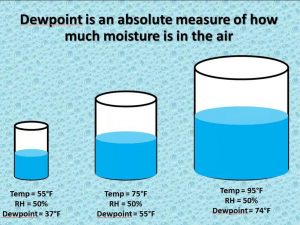In many of our tech data sheets, you’ll run across this phase under the “Limitations” section: “Substrate temperature must be 5°F above dew point.”
What is Dew Point? Why should you care?
Simply put, the dew point is equal to the temperature at which condensation begins to form on a surface (depending upon the amount of moisture in the immediate, surrounding atmosphere).
As a coatings contractor, the surface you are typically coating (the floor) is the surface you need to be concerned about from developing condensation.

When the substrate temperature is within 5° F (3°C) of the dew point temperature, condensation forms on the floor’s surface and it will mess with your coating if you decide to proceed (the look of it or the adhesion to the floor/previous coat will be compromised). For example, a urethane put down when the surface temps are within 5° F of the dew point may turn cloudy (caused by moisture).
As air temperature rises, it can hold greater amounts of moisture and as it cools, it can hold lower amounts of moisture.
For example:
Water condensing on a glass of ice water is the result of the surface temperature of the glass cooling below the dew point of the air that is in contact with it.
that is in contact with it.
As the air around the glass of ice water cools, the air’s ability to hold moisture lowers and as a result, condensation occurs when that air cannot hold any more moisture.
Pay attention to the weather forecast & the DEW POINT! A delay in your project is a good thing when it saves you the $$ from having to redo a floor!
A smartphone weather app will be one of your best friends to keep you out of trouble. Not only to look ahead in the week to help avoid rain, wind, cold or hot temps, but to closely monitor the DEW POINT for your projects.



























